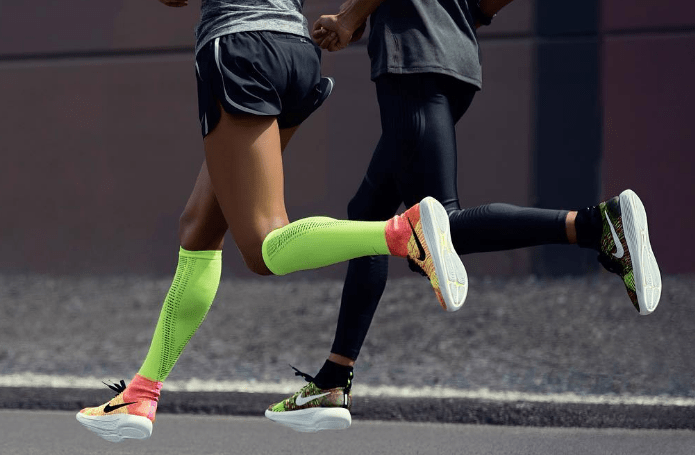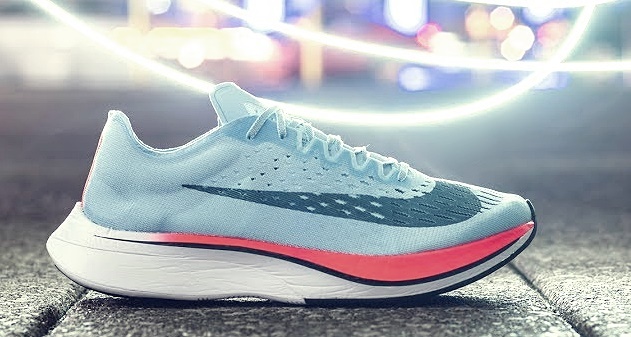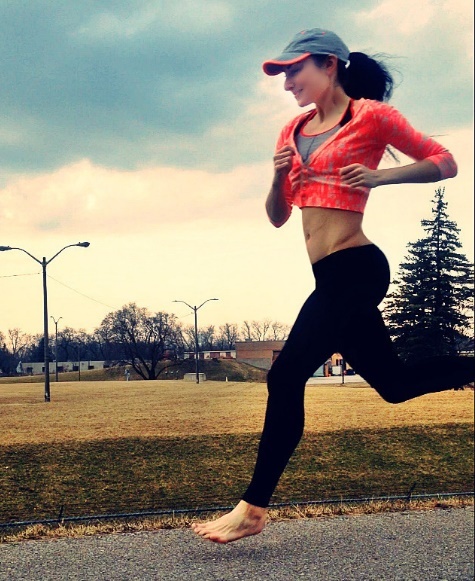One big way traditional running shoes hurt your feet is the narrow, constraining, inflexible fit severely limits widespread functional engagement of the feet. This is why ongoing use of these shoes eventually weakens the foot’s muscles, tendons, soft tissues and bones, and also contributes to flatten, inefficient arches!
Worse still, these deficiencies of the feet are also directly involved in causing over-pronation, meaning the back of the foot is more likely to shift into extreme, over-straining positions which also causes mechanical displacements up the leg during running, and is known to cause foot, shin, knee and hip injuries.

Bottom line, running with weak feet is not the way to get you out of injury proneness. In fact, to give you an eye-opening understanding of how quickly foot health deteriorates in conventional running shoes, a 2013 study in the journal, Foot and Ankle Research, found that runners in arch supportive, thickly cushioned running shoes showed reduced arch height immediately after a long run!
The researchers underscored that poor foot strength causes frequent negative changes in arch height profile upon weight-bearing activities and results in poor weight-bearing responses of the foot. In other words, when the feet are weak, the more difficult it is for the arch to be upheld and contribute to footstep stability, the more likely the feet are to injure under normal loading conditions.
The researchers also cautioned that weak foot muscles cause the anti-pronatory muscles in the foot to become increasingly unstable, preventing them from providing pronatory support. This contributes a greater extent to over-pronated feet that are also vulnerable to fatigue and injury.
- What is more, this data fits into a continuum of complementary findings showing that weak, collapsed-arches increases forefoot abduction (forefoot shifts away from the mid-line, while the heel bends inward) during the stance phase of running. This mechanical entanglement is known to cause more torque and strain to ripple out from the foot, up the leg during running.
The researchers noted that the mechanical stress and strain due to the change in high to low arch-height, results in an out-sized risk of bone, joint, soft tissue and muscle damage if running continues.

On a more positive note, the researchers highlighted that the foot’s soft tissue groups act as motion stabilizers of the foot-ankle complex, and that strengthening and conditioning these tissue groups would improve abnormal foot motions.
Guess whats the best way to strengthen these sectors of the foot? The best way to get the foot working more effectively is to keep the feet working independently. Being barefoot more often is the best entry point to do just that! Heres why!

Even more optimistic, studies continue to pile up showing that habitually shod (shoe) runners who switched to minimalist running and/or barefoot running show strikingly similar improvements in not only running form, but in foot functional health, including a healthier arch-height profile.
As I just briefly touched on, foot strike pattern when running plays a big role in affecting arch height and function. What so interesting is landing with a forefoot strike, especially when barefoot, when running engages the arch in a 3-point bend which was found to be responsible for improving arch height while simultaneously reducing overpronation. More on that here!
If you’ve enjoyed this content, you’ll love my content over at my YouTube channel, here, where I talk at length about the benefits of being barefoot, especially running barefoot! I also discuss more on the advantages of forefoot strike running over heel strike running.
References:
Cowely E and Marsden J.The effects of prolonged running on foot posture: a repeated measures study of half-marathon runners using the foot posture index and navicular height. J Foot Ankle Res, 2013; 6(20):2-6.
If you’d like, you can support Run Forefoot and help keep it going by making a donation in any amount of your choosing:

Or, you can also support Run Forefoot by shopping at the following top minimalist shoes brands, and be sure to bookmark the links:
Be Lenka: https://www.dpbolvw.net/click-7600968-14330828
FeelGrounds: https://www.feelgrounds.com/?p=RunForefoot
Xero Shoes: https://xeroshoes.com/go/Run_Forefoot
Iguaneye: https://www.iguaneye.com/?ref=8tfXVc92
Soft Star Shoes: https://shrsl.com/3mp1b
Wilding Shoes: https://bit.ly/3lIygQP
Earth Runners: https://earthrunners.com/?rfsn=6763579.f7f9c9
Vivobarefoot: https://shrsl.com/3kvih
Zappos: https://goo.gl/J1CeAd
Bretta Riches
BSc Neurobiology; MSc Biomechanics candidate, ultra minimalist runner & founder of RunForefoot. I was a heel striker, always injured. I was inspired by the great Tirunesh Dibaba to try forefoot running. Now, I'm injury free. This is why I launched Run Forefoot, to advocate the health & performance benefits of forefoot running and to raise awareness on the dangers of heel striking, because the world needs to know.
Latest posts by Bretta Riches (see all)
- Can You Run In Barefoot Shoes? Yes, But DON’T Heel Strike! - 21/07/2024
- Why Cushioned Running Shoes Are Really Bad for Your Feet - 19/07/2024
- Do Cushioned Running Shoes Cause Injuries? - 17/07/2024

